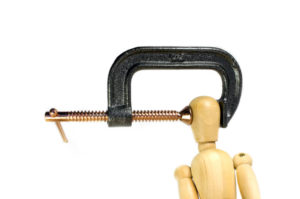 Migraines are a severe type of headache characterized by chronic throbbing and pounding. Although the exact cause of a migraine is uncertain, experts believe that changes in the brain and blood vessel contractions play a role. Approximately 45 million Americans suffer from persistent headaches, 28 million of whom are migraine sufferers. Finding the right treatments is crucial to the quality of life for these people. In many cases, using herbs for migraines can be practical and easily accessible.
Migraines are a severe type of headache characterized by chronic throbbing and pounding. Although the exact cause of a migraine is uncertain, experts believe that changes in the brain and blood vessel contractions play a role. Approximately 45 million Americans suffer from persistent headaches, 28 million of whom are migraine sufferers. Finding the right treatments is crucial to the quality of life for these people. In many cases, using herbs for migraines can be practical and easily accessible.
The Diagnosis
Migraine pain is more prominent than that of a common headache, and can last from four hours to several days. Accompanying symptoms often include sensitivity to light and nausea or vomiting. Noises and pungent odors become bothersome as well. For this reason, migraine sufferers frequently retreat to dark, quiet rooms at the onset of a migraine headache. Doctors often diagnose migraine headaches by evaluating a patient’s symptoms. If a doctor suspects a structural disorder, he may order additional tests, such as a CT scan or MRI.
Foods and Migraines
Many migraine sufferers have also noticed that some foods can trigger a migraine. Many of today’s processed foods contain chemicals and additives that often seem to trigger a migraine. Many additives, such as MSG (monosodium glutamate), chocolate, and alcohol (red wine), are examples. I always recommend that if you suffer from migraines, keep a food diary – you may find your trigger.
Treating Migraine Headaches
Once you have ruled out medical problems, you can begin treating your migraines. For most people, a mixture of remedies is effective, such as stress management techniques and medications or herbs. Using medications too often can lead to rebound headaches, a condition that occurs when your body becomes accustomed to the medicines. As a result, they stop working as they once did, and chronic pain becomes imminent. To avoid this vicious cycle, some people use herbs more often and turn to pain medications as an occasional remedy.
Herbs for Migraines
Among the most widely used herbs for migraines are chamomile, feverfew and flaxseed.
- Chamomile is favored for its light floral taste, a common tea for relaxation. Headache sufferers and people who have difficulty sleeping often use the herb to promote rest. Active chemicals in chamomile have anti-inflammatory properties that help ease headache pain.
- Feverfew is a migraine preventative that acts as a vasodilator, helping to relax constricted blood vessels that cause migraine pain. Feverfew also reduces nausea and sensitivity to light in some users. Some women use the herb before their menstrual cycles to prevent hormonal headaches. Others use feverfew daily, in dosages of around 125 mg.
- Flaxseed is a rich source of essential fatty acids and is a common herb for migraine headaches. Raw flaxseed can be dangerous because it increases levels of cyanide in the blood.
Supplements are generally safe when used as directed. If you are pregnant, you should consult a medical professional before using.
There are many different types of headaches, and migraines tend to be the most debilitating.
References: WebMD: Migraines and Headache